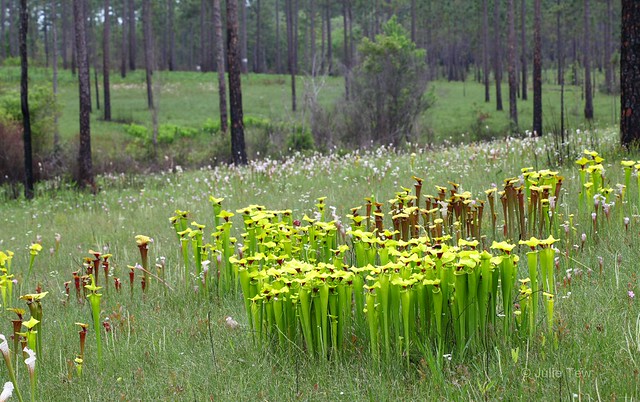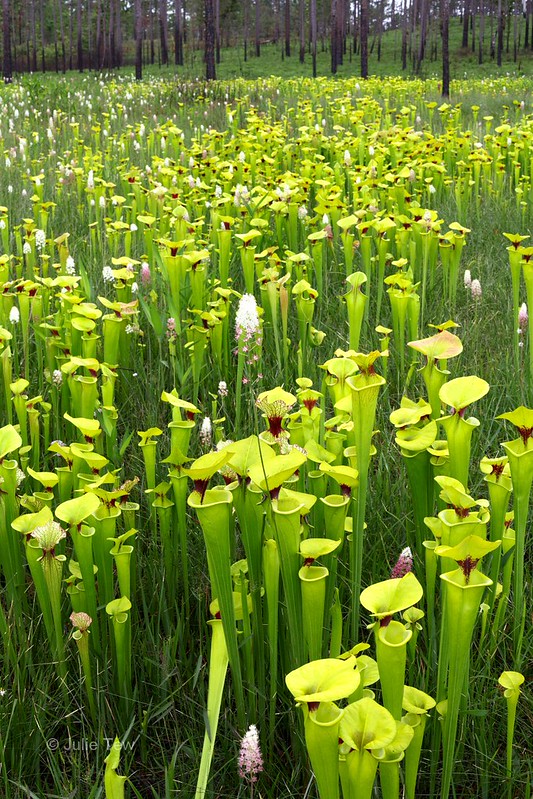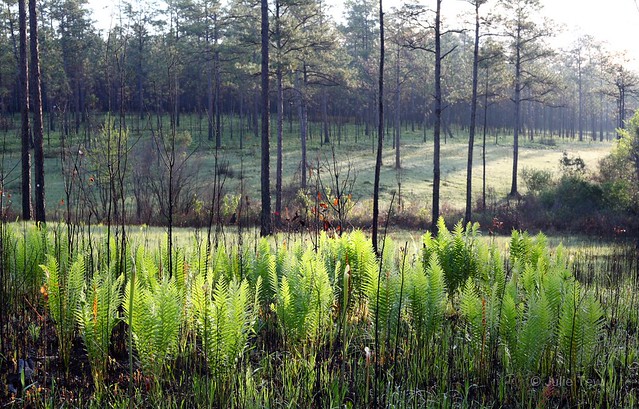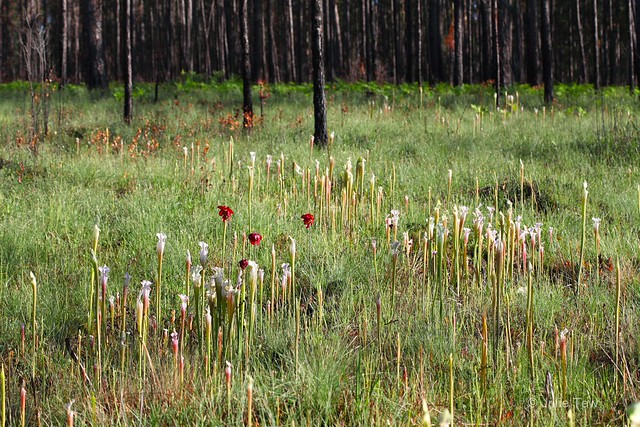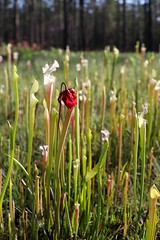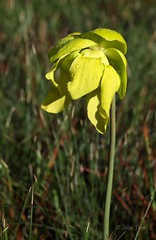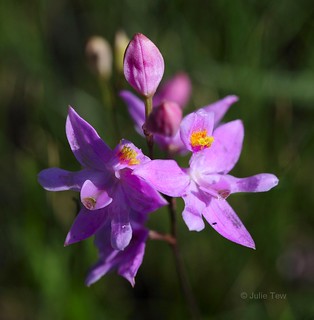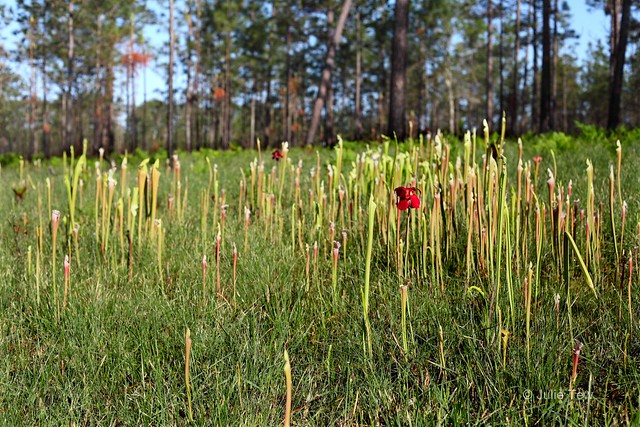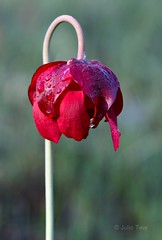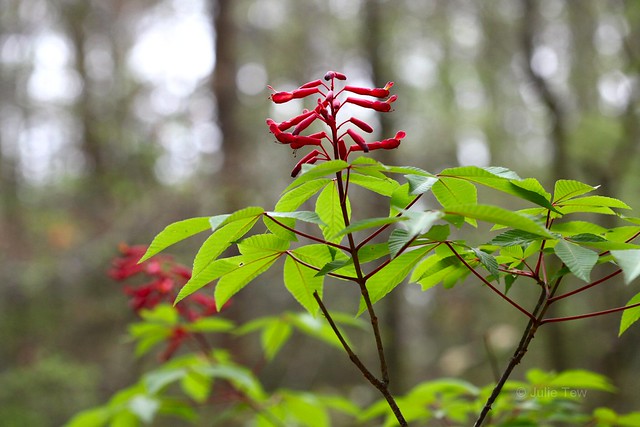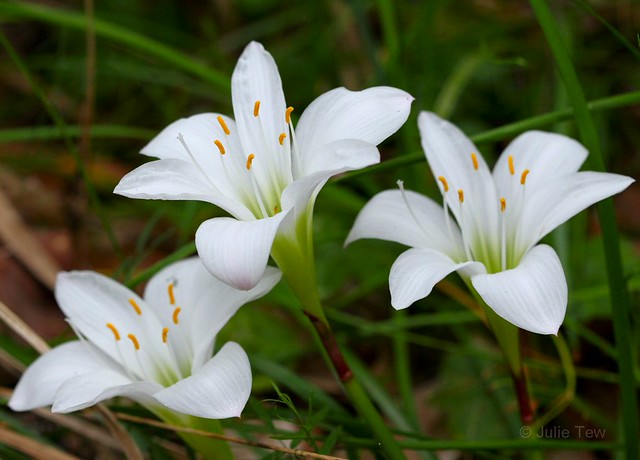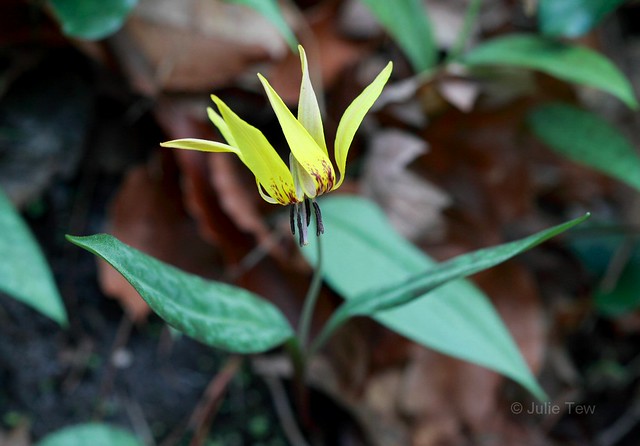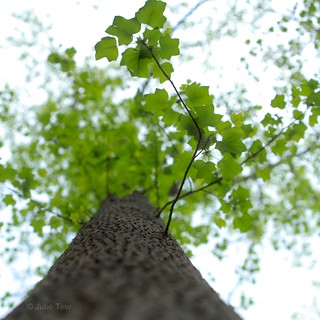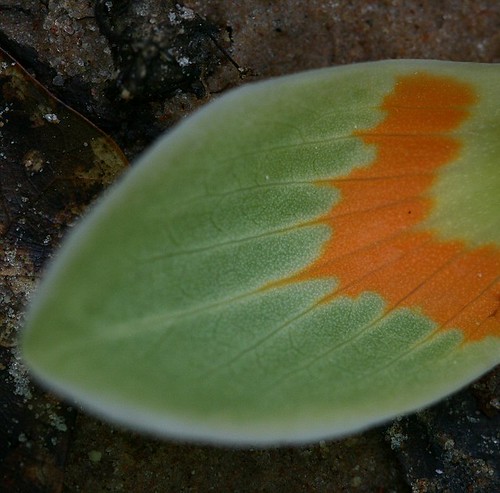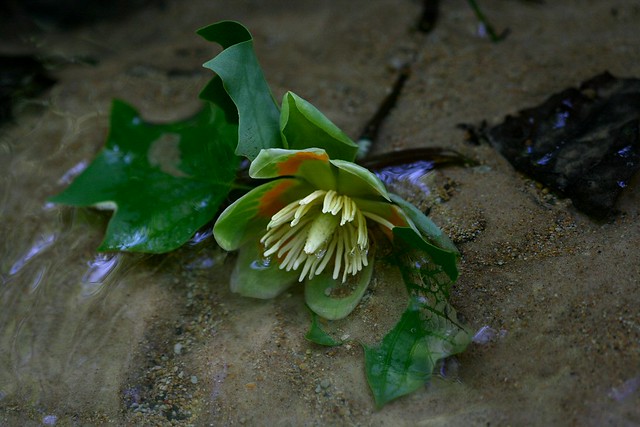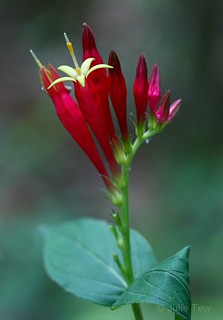Sunday, August 18, 2013
Spider Project
A few months ago, after mowing my lawn during a break in the rain, I noticed a female Argiope aurantia had made her home on the outside corner of my porch. I made a mental note to move her to the cluster of trees against the fence. Unfortunately, I never got a chance to complete that task. She's laid at least two egg sacs and attached them to the house's siding.
Though she'll die by the time it turns cold, her eggs won't hatch into thousands of little spider hatchlings until spring ("Charlotte's Web," anyone?). So now my task is to wait for her to die, then move her egg sacs carefully to the azalea bushes for cover.
Argiope aurantia is a pretty species of spider (at least the females are). She is harmless to humans and frequents gardens. She keeps a clean web. Of her common names, Writing Spider is the one I most appreciate, which comes from the zigzag design of the stabilimentum at the center of her web, a style not typical of other spiders.
Saturday, May 18, 2013
Twenty Days Later
Here are photos from the same area, 20 days later. Most of the pitcher plant blooms are gone, but the pitchers themselves have come up and grown as much as 3 feet high in that time. Most notable now are the Yellow Trumpets. You can see more photos from this trip here.
Thursday, April 25, 2013
Secret Place
There is a place deep in Blackwater River State Forest that is perfect, or at least as near to perfect as can be found. The plants and animals are native. The longleaf pines are still present with their signature wind-roaring music. But there are still human influences; like the seldom-used forest road that runs nearby, access enough for forestry workers to oversee controlled burns or hikers to explore the fringes of the area.
The land here rolls gently, dry scrub hills that descend into the soft ground of bogs, cut by tiny creeks, many less than a foot wide, fed by rainwater that percolates down through the sandy soil. Most nutrients of use by plants are flushed away with all this water. That is why plants here have adopted a carnivorous lifestyle.
The main population of pitcher plants lives on a boggy hillside that faces south. It is a small trial to get there. First, leave the comfortable forest road and climb down into the ferns and grass. If the forest has been burned in the past few months, the grasses will be only knee high. Where the ground starts to get soft and there are patches of pitcher plants, stop and listen for the sound of water. Follow that sound down to where the ground is still black from fire, where the heat was highest, and the oaks and bays are struggling to recover. Look for green ferns and sphagnum moss. Try not to sink to your knees in the soil. Find the lowest elevation where the main creek’s flow cuts through the thicker hardwoods. There’s a place to cross if you are careful to test the ground with your weight and have a few smaller trees to cling to. Don’t be tempted to just step into the stream unless you want to lose a boot, as it is so soft at the bottom of all that water that there might not be a bottom at all. Jump if you must, from one foot to the other across the water. Then reverse the process for your ascent to that south-facing hillside.
The pitcher plants seen at first glance (Sarracenia Leucophylla, Sarracenia flava, and their hybrids) are not the only ones. The ground is also covered in them (Sarracenia psittacina). Tread softly.
There are also orchids, their pink coloring distinguishing them from any other plant. Usually, they are rivaled by Meadowbeauty (Rhexia), but their blooms are not present yet so soon after the fire.
This land is rare. It is aligned perfectly for sunlight, sloped just right for water drainage, made of the correct soil, still housing the plants that evolved here. There is no spot quite like it in all the forest, or in all the world. It was bought by the state for conservation, recreation, and admittedly some exploitation. Unfortunately, this means the state government has the power to do what it may. The land has been recommended for oil drilling as recently as a few months ago.
For wherever you find your secret place, here are suggestions:
 Go early. Even if you get no sleep the night before. The forest is softer in the morning.
Go early. Even if you get no sleep the night before. The forest is softer in the morning.
Find a place to stop. Stand if you must. Sit if you can. But be still.
Close your eyes and listen. Open your eyes and watch.
Labels:
Blackwater River State Forest,
bog,
botany,
carnivorous plants,
conservation,
ferns,
Forest,
native plants,
Northwest Florida,
orchids,
Pinelands,
pitcher plants,
plants,
preserve,
secret,
spring,
wildflowers
Friday, April 5, 2013
Fragment
Here is an example of what a leftover, disturbed, fragmented wooded area looks like.
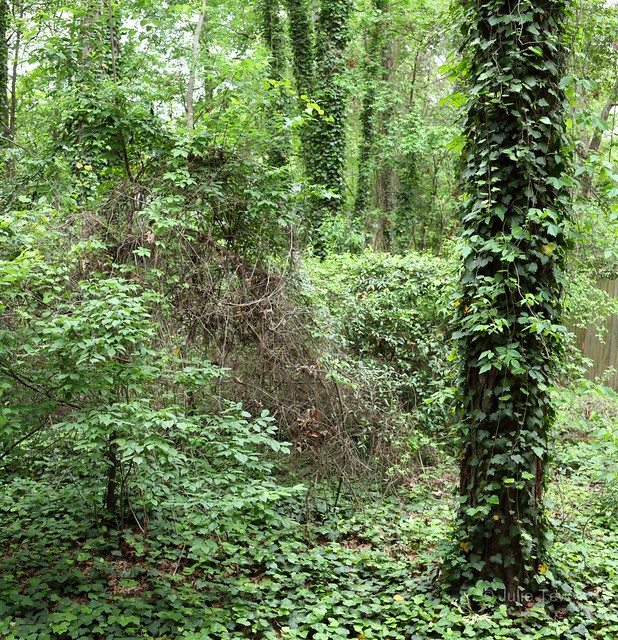
This is the view from my current neighborhood. This little plot of land was left as a buffer and drainage zone. Everything is smothered in kudzu, Virginia creeper, and poison ivy vines. Every pine tree, some of them fairly old, is covered right up to the crown. When the vines reach the top, they string out to reach for something else, forming giant "laundry lines" running tree to tree. When it rains, these hanging masses saturate with water, the weight usually too great, and come crashing down, sometimes bringing trees with them.
Despite the slim variety of plant life, this ecosystem, and the similar ones nearby, seems to be enough to support squirrels, birds, rabbits, foxes, snakes, and even a nesting site or two for bald eagles.

This is the view from my current neighborhood. This little plot of land was left as a buffer and drainage zone. Everything is smothered in kudzu, Virginia creeper, and poison ivy vines. Every pine tree, some of them fairly old, is covered right up to the crown. When the vines reach the top, they string out to reach for something else, forming giant "laundry lines" running tree to tree. When it rains, these hanging masses saturate with water, the weight usually too great, and come crashing down, sometimes bringing trees with them.
Despite the slim variety of plant life, this ecosystem, and the similar ones nearby, seems to be enough to support squirrels, birds, rabbits, foxes, snakes, and even a nesting site or two for bald eagles.
Monday, March 25, 2013
Bright and Brilliant Spring
Spring comes in stages in North Florida. It's long and drawn out, with blooming starting in January, sometimes even carrying over from the previous year. Yellow Jessamine, one of the first plants to bloom, sometimes starts to release its yellow blossoms in late November. In reality, North Florida doesn't get a winter... most years skip from autumn to spring.
Along the Apalachicola River, tributary streams have cut into the sloping land to create secluded areas for rare plant and animal life. One very specific example of this can be found at the Angus Gholson Nature Park in the city of Chattahoochee, FL. Here, it is a short walk to the great river, with hardwood forests offering a buffer zone from development and safe harbor for many endemic plant species.
A steephead spring near the park's entrance is the birthplace for a stream that runs along the main trail. The stream disappears and reappears from the ground as the terrain drops, the edges of the water often punctuated in February and early March with the highlighter yellow blooms of Erythronium americanum, the Yellow Trout Lily. Nowhere else in Florida does the plant grow in such abundance.
A few weeks after the trout lilies go to seed, the forest is accented by another bright-colored bloom from Rhododendron austrinum, Florida Flame Azalea. It grows high above the stream on the steepest slopes in the patchy light from overhead trees.
A few more weeks into the season, and the giant tulip poplar trees (Liriodendron tulipifera) drop their neon orange-streaked blooms. The forest floor, coated in their petals, resembles the aftermath along a parade route, coated in confetti. It is also around this time that the bright red, cigar-shaped pinkroot (Spigelia marilandica) blooms open, and the delicate, pink flowers of Fringed Campion (Silene catesbaei) unfurl.
There is always something in bloom here, but when spring turns into the intense heat of a North Florida summer, the forest closes in on itself like a secret, weaving together the ever-growing foliage with Smilax vines and the sturdy webs of Golden Silk Orb-weaver spiders.
More photos from Angus Gholson Nature Park throughout the entire year can be found here.
Labels:
apalachicola river,
bloom,
chattahoochee,
endemic,
fl,
florida,
hardwood forest,
native plants,
native wildflowers,
nature,
north florida,
park,
plants,
preserve,
spring,
steephead,
wildflowers
Friday, March 15, 2013
Galls
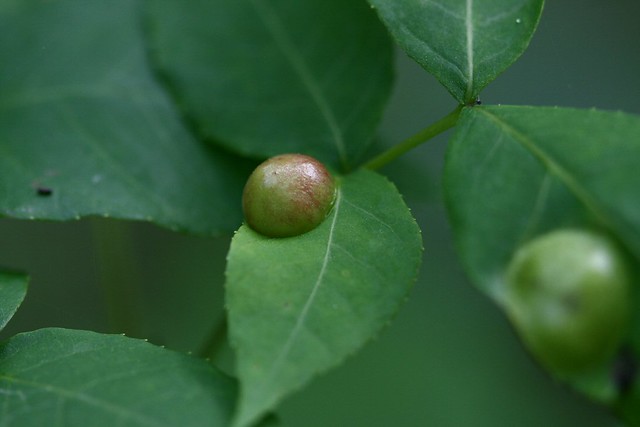
Nature is not about perfection. Nature is about use and balance, one creature associating with another for some benefit to one or the other or both. In the case of plant galls, the intruder benefits at the plant's expense.
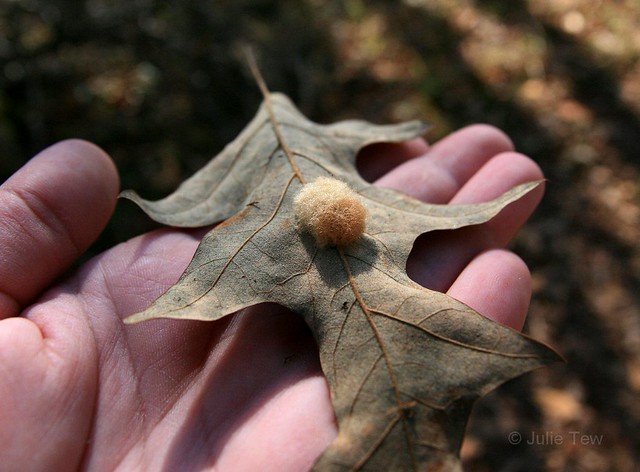
Galls are formed from the plant's tissue as the insect or fungus affects it.

For insects, galls provide a birthplace for offspring, food, and shelter.
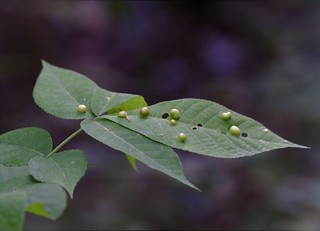

A comparison of the same leaf after one month; larvae have hatched.
At first glance, galls can sometimes look like plant fruits, berries, or seeds.
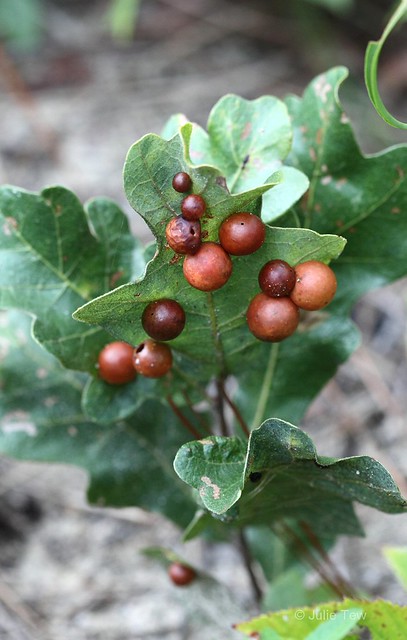
Galls are normal even in a healthy forest. From my experience, they affect plants heavily in a particular area, even if surrounding areas are gall-free. I have often wondered why some areas were more susceptible than others to the attacks. Perhaps conditions are more favorable.
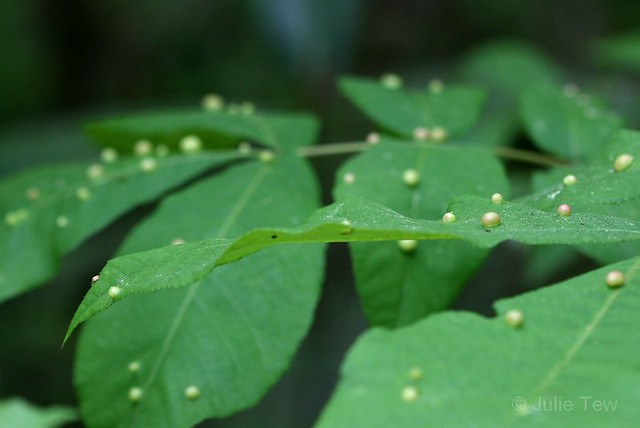
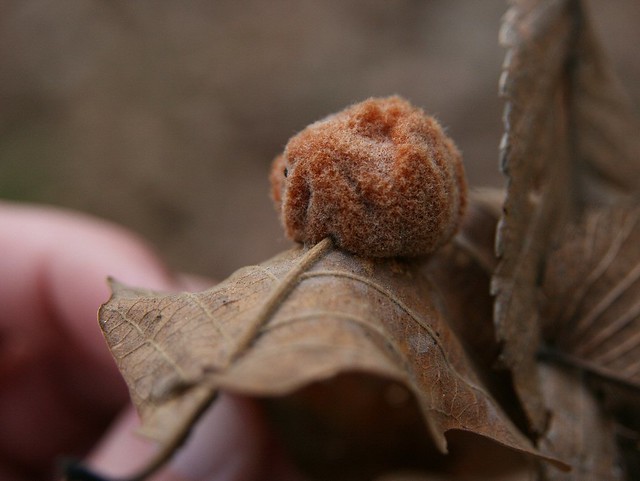
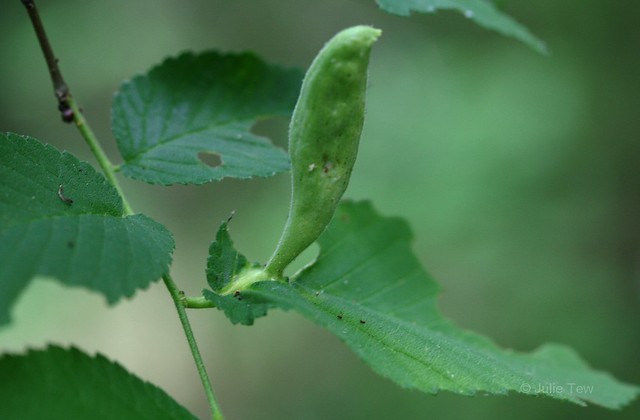
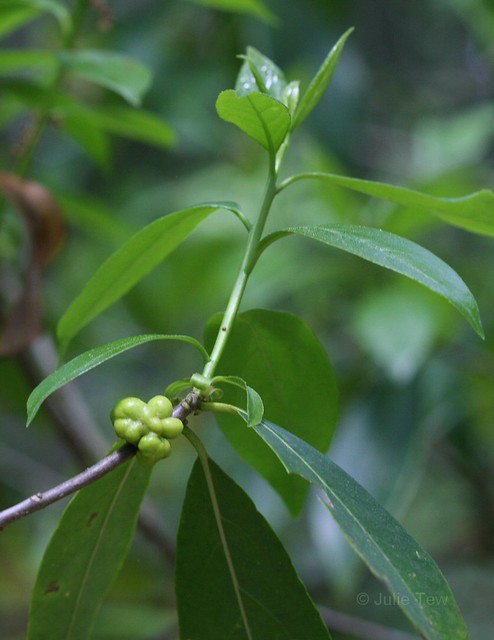
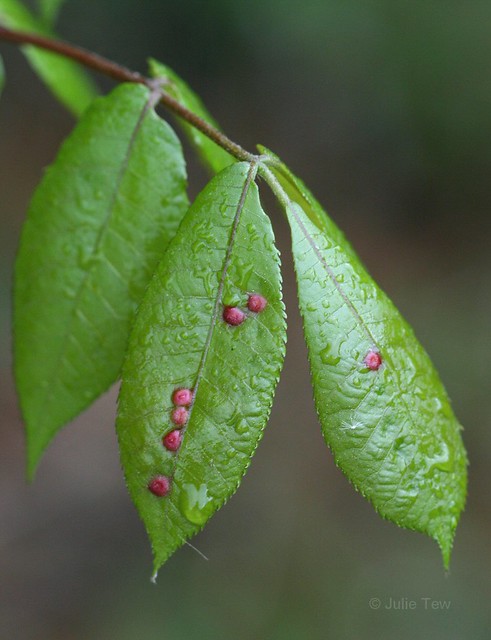
Labels:
botany,
cecidology,
entymology,
fungi,
gall,
galls,
mycology,
nature,
parasite,
plants
Monday, March 11, 2013
Looking Down Into Water

Florida may be named after its flora, but it is the land of water, too, water that changes moods with every wind, rain, and angle of the sun. It changes the land, and it changes us.
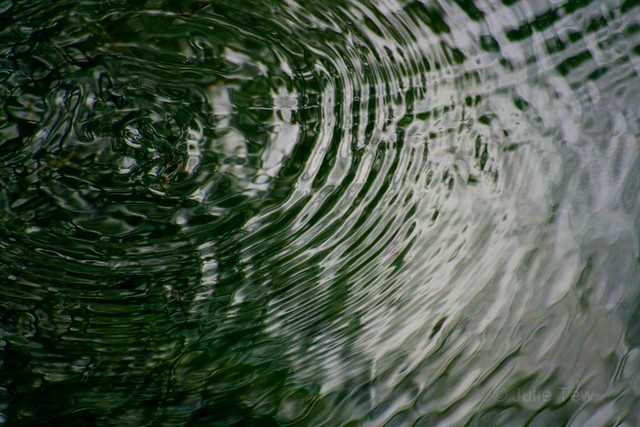
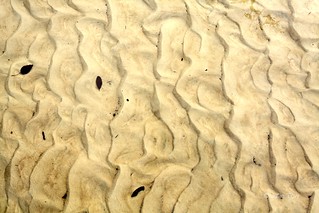
Want for its mythical Fountain of Youth has turned into an aquifer-sucking need. Florida’s water is drying up. It seems hard to understand when every river from Escambia to Suwannee County is over its banks after the wettest February on record, but yearly use from population growth outdoes yearly accumulation. Some bubbling springs have ceased flowing, turning stagnant and warm.

Pollution is another matter, with more water discharging directly into streams than back into the aquifer, much of it rank with manmade chemicals. Pesticides and fertilizers are very well known in these waters.

But there are still beautiful, water-filled places, despite less groundwater and more pollution from wastewater runoff. A visitor might not know the difference in the appearance of our spring-fed rivers today compared to only a few decades ago, before the hydrilla started taking over, before the crystal waters began to tinge green and brown.
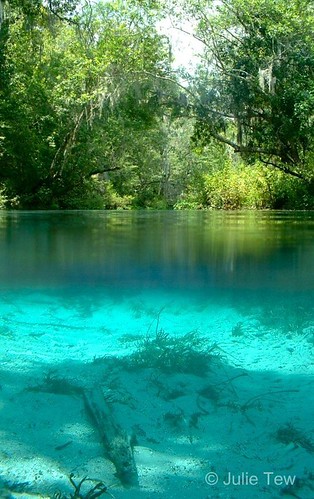

There is a fight for development versus the necessity of keeping our wild swamps and coasts, the bogs that suck boots right off the feet of any who try to trespass but shelter the most delicate and rarest of nature’s species.
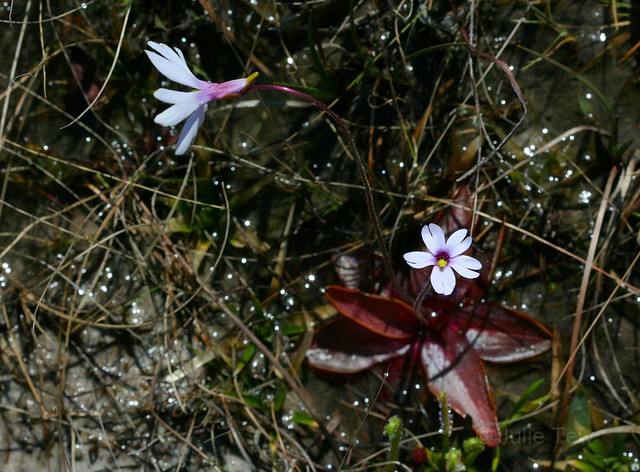
Looking down into water may be a good place to start helping our state. Maybe the reflections we see in Florida’s rivers will show us all there is to be gained by saving them.

Friday, March 8, 2013
Flood Stage
The local rivers made it above flood stage recently with all the rain the panhandle received.
 The Chipola River near Florida Caverns State Park just north of Marianna, FL crested at 22.97 feet a week ago. Flood stage is 19 feet. The photo above is of a boat ramp just off the highway. You can see the "Please Don't Litter" sign is partially submerged, but farther down the ramp to the far right is the top of a mostly submerged sign. A park across the road was under several feet of water, the flood waters threatening a building up a small hill.
The Chipola River near Florida Caverns State Park just north of Marianna, FL crested at 22.97 feet a week ago. Flood stage is 19 feet. The photo above is of a boat ramp just off the highway. You can see the "Please Don't Litter" sign is partially submerged, but farther down the ramp to the far right is the top of a mostly submerged sign. A park across the road was under several feet of water, the flood waters threatening a building up a small hill.
 The Chipola River near Florida Caverns State Park just north of Marianna, FL crested at 22.97 feet a week ago. Flood stage is 19 feet. The photo above is of a boat ramp just off the highway. You can see the "Please Don't Litter" sign is partially submerged, but farther down the ramp to the far right is the top of a mostly submerged sign. A park across the road was under several feet of water, the flood waters threatening a building up a small hill.
The Chipola River near Florida Caverns State Park just north of Marianna, FL crested at 22.97 feet a week ago. Flood stage is 19 feet. The photo above is of a boat ramp just off the highway. You can see the "Please Don't Litter" sign is partially submerged, but farther down the ramp to the far right is the top of a mostly submerged sign. A park across the road was under several feet of water, the flood waters threatening a building up a small hill.
Thursday, March 7, 2013
Subscribe to:
Posts (Atom)


